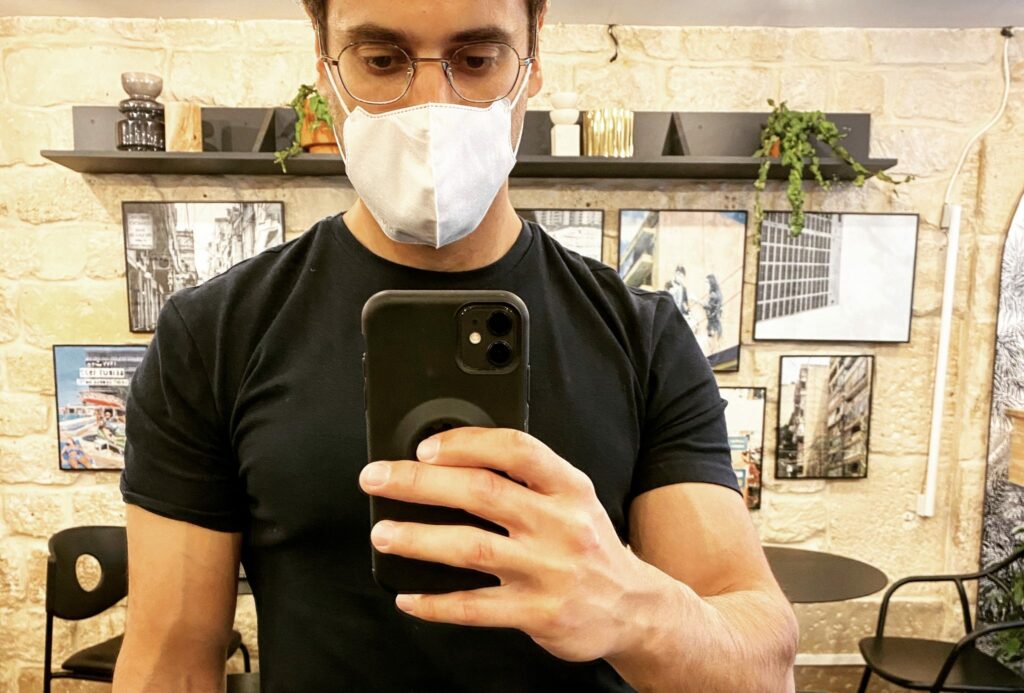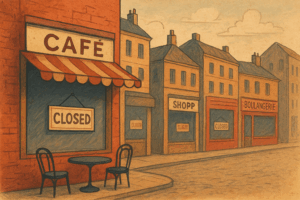Here is my memo relating to the cleaning and disinfection plan, to which I am providing free access to everyone during this period of confinement! I integrated it into my training entitled “introduction to foodtech for apprentice restaurateurs”, which you will find by following this link.
Note: do not hesitate to consult my post on financial and HR measures to take to deal with the COVID-19 crisis.
Why a hygiene plan?
First of all, the regulations require that in each establishment preparing, storing or distributing foodstuffs, there must be a permanent state of cleanliness of the premises and their equipment.
To achieve this result, each establishment manager must clearly and precisely define a cleaning and disinfection plan.
Besides the law, it will be that impeccable hygiene must be required in the establishments you manage and for which you are responsible, as entrepreneurs or managers. Whether for yourself, or for your customers.
There COVID-19 health crisis will also be an opportunity for many restaurateurs to review all their hygiene processes, in order to provide the best possible cleanliness to their employees and their customers within their establishments open to the public.
This will be a major issue in the years to come, both in terms of regulations and in terms of internal and external communication. Consumers will be much more reassured to know that in terms of hygiene, everything is respected within your establishments, and you will be able to communicate about it if you have nothing to hide, and that you respect all the rules.
Definition of a cleaning and disinfection plan
We quickly get lost and panicked when we find out about HACCP standards on the internet, because there is a lot of documentation, a lot of articles and a lot of rules. How to go about it and where to start?
Do not panic, I will summarize everything for you very simply with this introduction to hygiene procedures in catering. If you already apply this, you will have come a long way for an entrepreneur who operates in the world of catering.
First, let's start with the cleaning and disinfection plan. In practice, this plan is a table which summarizes:
- What are the surfaces on which these operations must be carried out: this is the WHAT (or WHERE).
- Frequency and times where cleaning and disinfection operations must be carried out: this is the WHEN.
- With what material : this is the WITH WHAT. Warning: we too often see employees cleaning work surfaces with dishwashing liquid, or the floor with just water. Listing the equipment by zone is therefore essential!
- What procedure must be used (dilution, spraying, rinsing, etc.): this is the HOW.
- Who are the people responsible who execute the cleaning and disinfection operations of each area (cooks, waiters, divers, etc.): this is the WHO.
- And finally, possibly the means of verification, for industries requiring bacteriological controls. Otherwise, it will be a visual inspection by the manager.
Tell yourself that there are 5 important things to include in this famous table, these are the following points:
WHAT, WHEN, WITH WHAT, HOW, and WHO?
Come on, let's recap one last time, so that it sticks to your head:

So how to put this into practice? Very simple, in the form of a table! But rather than theorizing, let's take examples, it will be much more telling.
Simple example: cleaning the floor of an office room

In the example of an office room to be cleaned by a maintenance worker, here is what we have:
- What should we clean? Floor.
- When ? Every day. We can even specify when during the day if necessary.
- With what ? A vacuum cleaner, which will be specified where it is located if necessary.
- How ? By vacuuming and not forgetting the nooks and crannies.
- By who ? The maintenance worker.
More difficult example: a kitchen floor!

- In this example, we must clean what? The floor of a kitchen.
- When ? After each service.
- With what ? A broom (food broom, I specify, in polypropylene) and a shovel, the disinfectant degreaser, lukewarm water, a brush, a squeegee.
- How ? We first eliminate the waste by sweeping it, we then apply the floor product (disinfectant degreaser), we leave it to act for 5 minutes, we pass the brush, rubbing sufficiently (making sure to clean the siphon well), then rinse with water and the squeegee.
- By who ? It's up to you, normally the cooks and/or divers.
As you see, it's very simple! You just have to sit down for a few hours and put it all into shape. in the form of a table that you will display on your obligatory panel (it's better than digital so that the ideas get into the heads of the staff).
Now that we've seen how to set up this type of plan for a particular area, all you have to do is: take height, increase the level of abstraction, in order to seek to segment the areas that will need to be cleaned and disinfected. Indeed, you are not going to ask the dishwasher to clean an entire restaurant.
You can thus separate kitchen, WC, room, storage and trash room, for example, and distribute tasks according to positions, and with a rotation system for large teams.
Then, you will build a cleaning and disinfection table by area. And in each table corresponding to an area, you will be able to distinguish the different “WHAT”, namely the floor, work spaces, ovens and microwaves, etc.
Help determining frequencies for each zone
In catering, here are the recommended cleaning frequencies per area, but you are free to adapt these frequencies significantly according to your needs, while remaining realistic in relation to your activity:
- Floors, grates and siphons: after each service
- Door handles and switches: 1 time per day
- Hand washes, taps: once a day
- Work plan: after each service
- Garbage disposal: once a day or after each service as needed
- Cooking equipment: once a day
- Hood filters: once a week
- Small equipment: after each use
- Drawers and shelves, cold cabinets: once a week or once a month depending on needs.
What is the difference between cleaning and disinfecting?
Contrary to what you might think, cleaning is not an easy task. Many have hardly ever done any cleaning in their lives – for reasons we won't go into here – and just giving them a broom and cleaning products puts them in a state of total paralysis.
First of all, I suggest to you as a manager not to judge the person who does not know how to clean, nor to reprimand them, even before having given them real training and having shown them the actions.
But before that, let's go back to the basics, because even you, even I, were not necessarily made aware of these issues originally.
In the hotel and catering industry, cleaning and disinfection are two twins that should never be separated. We have too often seen waiters or cooks cleaning their surfaces with water, or with inappropriate products.
To know how to apply a hygiene procedure, you must first understand what is the difference between cleaning and disinfection, and why these two procedures go hand in hand, and in a specific order.
Definition of cleaning
Cleaning consists of remove any dirt from a surface macroscopic or microscopic that may be found there. It is done using detergent products chosen according to the soiling and the support.
The purpose of cleaning is to make the surface clean and in good hygienic conditions, and precedes the disinfection stage.
Definition of disinfection
Disinfection is an operation with a temporary result allowing the elimination or kill micro-organisms and/or inactivate viruses carried by contaminated inert environments.
Suffice to say that in this period of health crisis linked to COVID-19, we are in the middle of it.
The aim of disinfection is therefore to eliminate the micro-organisms present on the surfaces of your workplace, and to make these surfaces bacteriologically clean, using a disinfectant product. To do this, these surfaces must have been cleaned of macro and microscopic dirt. with detergent.
Everything that needs to be cleaned and disinfected must be in the famous cleaning and disinfection plan.
Definition of a detergent
Without going into detail about its chemical properties, catering detergent is a chemical agent allowing to remove dirt, and which is generally found in soaps, laundry detergents, floor and surface cleaners and others.

The detergent cleans peeling the dirty substrate from the surface it is on, in order to mix it with a liquid while forming a more or less dense foam. The agents contained in the detergent thus move the dirt.
Detergent is therefore the product used to clean.
Definition of a disinfectant
A disinfectant aims to kill, destroy, attack or inactivate any micro-organism on contaminated surfaces or environments. Depending on the product chosen, the disinfectant can be bactericidal, virucidal or fungicidal (for fungi).
Please note: unlike detergent which will eliminate dirt, a disinfectant will only act on bacteria, viruses or fungal organisms. Disinfectant will not clean or remove soils. And symmetrically, a detergent will not eliminate micro-organisms! You would have understood it, the two products are therefore complementary.
Two separate passages or a two-in-one
You will have understood, if you want a deep cleaning, you will need to do a first pass with a detergent in order to eliminate dirt and restore shine to your surfaces, then after rinsing the detergent, a second pass with the disinfectant.
If you are a purist, you will do the two steps separately. It is highly recommended for sensitive locations, such as hospitals, schools, canteens, etc.
For a small restaurant, you can also use a two-in-one product, which will have less effectiveness, however. To do this, search for “cleaner – disinfectant”, because sometimes the word “cleaner” is synonymous with “detergent”.
As such, most suppliers will mainly sell you “two-in-one” products, because it is simpler for small fast food restaurants:

Here, a disinfectant jet (non-detergent!) without rinsing, which can be useful for small surfaces to clean:
In fact, depending on the products you choose, you will need to do one or two passes, rinse or not, and all this should be indicated in the famous cleaning and disinfection plan!
Prevention of occupational risks
It goes without saying that detergent and disinfectant products are harmful to health and can cause enormous after-effects. So you shouldn't do anything with it!
To prevent risks in business, it will be your responsibility to inform all your teams about:
- Precautions for use, safety measures, dilution.
- Steps to take in the event of an accident
- Storage of products: in a separate location from the kitchen, ideally a dedicated, closed cabinet, and ALWAYS in their original packaging!
Finally, be sure to check each label of each product, in order to distribute the products according to their characteristics (food contact or not, etc.).
How to clean and disinfect in practice?
As I explained previously, cleaning and disinfecting is no easy feat. To get the job done right, it is necessary to explain the operating mode and the tools used. Thus, each passage is made up of several essential steps.
Operating mode
- The preparation : storage of supports, securing of surfaces (no food, etc.), and removal of coarse dirt and other waste by hand, with a glove.
- Cleaning : application of detergent diluted with water (or turnkey already diluted) and mechanical action (rubbing with a towel intended for cleaning).
- Rinsing : rub with a towel soaked in water.
- Disinfection : application of disinfectant diluted with water (or turnkey) with deadline to respect
- Rinsing with clear water
- Drying : the floor with a squeegee (and not a mop full of microbes!!!) and a single-use cloth for surfaces, stainless steel, etc.
Furthermore, you must always make sure to do things in this order:
- From top to bottom (ceilings, walls, surfaces then floor)
- At more or less equal height, from least dirty to most dirty.
You see, it’s not complicated, you still need to know how the different stages take place, and in what order :)
I'll let you "factor" the process in the case of using a detergent-disinfectant, rinsing or not, the principle is the same.
And these steps must, I remind you, be clearly indicated in your cleaning and disinfection plan! Do you remember the painting at the beginning? 😉
Installation of dedicated equipment
In terms of storage, I advise you to create distinct spaces between equipment for the room, equipment for the kitchen, etc. With labels firmly stuck on the shelves to avoid any errors.

Furthermore, the cloths will have different colors depending on the areas in which they will be used. For example blue for the room, pink for the kitchen, yellow for the toilets and trash cans.
Same thing for food brushes for example. Using color coding in cleaning helps reduce the risk of cross contamination.
Create a product repository
It is always good practice to list all your hygiene products in a digital and paper document. This is your product repository, which will be made available to your teams in your cloud and posted somewhere in the technical area.

There are thus the characteristics of each product, which will indicate to those who wish to consult it, for each product name, its destination (floor, toilet, tables, etc.), its dosage type (ready to use, diluted), and other additional information (risks for example) .
The achievement register
Because it will be necessary control and hold your employees accountable, the completion register is the table on which the person in charge of this or that cleaning and disinfection task can sign, in order to have a written trace of their passage, and in order to take responsibility for this task.

This traceability is necessary for the general interest of your organization.
Display of good hygiene and safety practices
In addition to the cleaning and disinfection plan, the product repository, and the register, it is also necessary display basic hygiene rules in order to remind them (or introduce them?) to your colleagues:
- Hair always tied up, for those who have it long.
- Wearing a charlotte in the kitchen.
- Jewelry must be removed! And if it is impossible to do so, gloves are often changed.
- Wearing an apron, kitchen shoes, etc.
- And regular hand washing, in addition to that which must be done after changing positions, leaving the kitchen, touching a switch, etc.
Conclusion
In short, building your cleaning and disinfection plan is really not complicated. You just have to take the time to do it. It's not the most exciting task, but it's a must, and once it's done, you'll be at peace for a long time!
So I summarize:
- We construct the different cleaning and disinfection tables : one per mega-zone (room, kitchen, WC, etc.), and each is made up of mini-zones (oven, fridges, taps, etc.).
- Forming and we regularly raise awareness among our staff about cleaning and disinfection, with operating mode display in the tables previously mentioned.
- We tidy its hygiene products in a good way distinct, with labels, in a dedicated and closed room or cabinet, which is not in the kitchen or lab.
- We also display the product repository, which we will update if necessary.
- We display (or digitize) the achievement register, for traceability purposes.
I hope I've helped you with this step of building your restaurant or food concept, and if you have any questions, don't hesitate to ask in the comments!
Bonus: hygiene services that can help you
Here are some companies or consultants that I recommend in implementing a hygiene strategy in your organization:
- Traqfood Or Octopus, two start-ups that are digitalizing hygiene.
- Coachmonresto.fr, which can provide you with training, and I recommend that you do it once a year in order to raise awareness among your teams on the subject!
- Christophe ROGER : expert in collective catering for more than 20 years, Christophe is an outstanding consultant for your teams. I call on him for hygiene training in my premises, and I highly recommend it.
- PKG Food : to order your hygiene products.
- Chocolate, an application to place your supplier, packaging and hygiene orders.
For those who want to delve deeper into the subject of restoration, find my white paper, which I update according to the time I have and the experience I acquire every day 🙂






